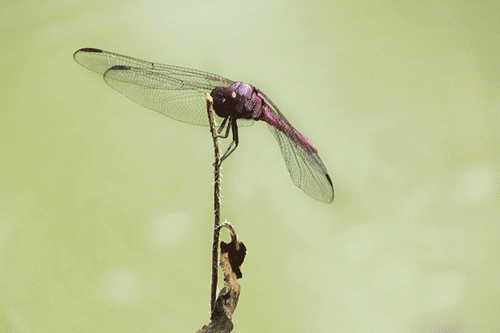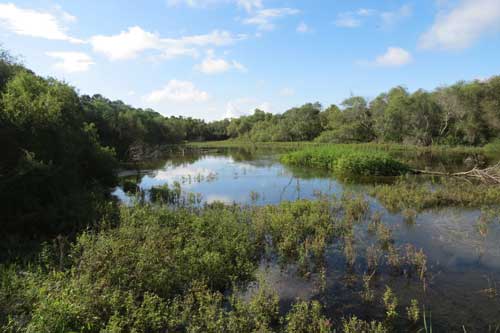
Conservation Cause: Beneficial Insects
 Roseate Skimmer, Sabal Palm Sanctuary
Roseate Skimmer, Sabal Palm Sanctuary



Text and photography by J. C. Stevens
During a recent birding trip to the Rio Grande Valley, I had multiple encounters with the unofficial Texas state bird -- the mosquito.
I came prepared for my excursions to the Southmost Preserve and Sabal Palm Sanctuary, places I knew were rife with mosquitoes. Armored with a long sleeved shirt, long pants, knee socks, boots, hat and plenty of bug spray, I thought I was ready for the fight.
But all resistance was futile. Those mean Texas mosquitoes bit right through my clothes, socks and spray. One especially nasty tormentor bit me on the face.
Mosquitoes are the deadliest creatures on the planet. According to the World Health Organization, millions of people suffer and die each year from mosquito-borne diseases. The insects also harm birds. West Nile Virus, for example, has reduced populations of crows, robins and thrushes.
Climate change is increasing the number of swampy spots around the world. That means more mosquitoes, and more mosquito-borne diseases. Humanity needs to rid the planet of these pestilential pests without destroying beneficial insects and birds in the process.
People who have read my book Dragon Lad know that dragonflies and damselflies love munching mosquitoes. When I visited Anzalduas County Park, across the Rio Grande River from Mexico, a swarm of large dragonflies hovered nearby. The dragonflies were there to prey on the mosquitoes attacking me and my fellow birders. I was happy to see them and wished there were three times as many!
Sadly, dragonflies and damselflies are at risk from many mosquito control schemes. Insecticides used in these programs can also harm fireflies, another insect featured in Dragon Lad. Traps using carbon dioxide or propane to attract mosquitoes contribute to the greenhouse gases already hurting our planet. And commercial bug zappers aren't effective either. They kill as many beneficial insects as bad ones.
Scientists and business are exploring high-tech solutions, including blasting the insects with lasers or disrupting their reproductive cycles with biotechnology.
I'd like to see more low-tech, low-cost, environmentally sustainable ideas for ending the mosquito menace. If better solutions exist, why aren't they more widely deployed?
One thing that might help would be to identify natural predators, like dragonflies and fish, and find ways to grow their populations in mosquito-prone areas.
We should also study herbal repellents and plant-based solutions for keeping bugs at bay. Home gardeners have long advised planting marigolds to ward off insects. Do these old folk remedies really work? Let's find out once and for all.
Not everyone cares if birds or dragonflies die as a result of mosquito infestation and control. But surely everyone cares if humans do. Mosquitoes bite birders, but they also bite gardeners, farm workers, construction workers, and children. The pernicious pests are only going to get worse as our world gets warmer and wetter. It's time to nip this problem in the bug.
Author's note: This article was first posted in November 2015, before the Zika virus became headline news around the globe. Now, more than ever, we need to find an environmentally sound solution to the mosquito problem.